Concert Hall Layouts for Every Type of Performance
Designing a concert hall layout takes more than placing a stage and rows of chairs. With a detailed floor plan, you can test layouts, plan audience flow, and ensure great sightlines and acoustics before the event begins.
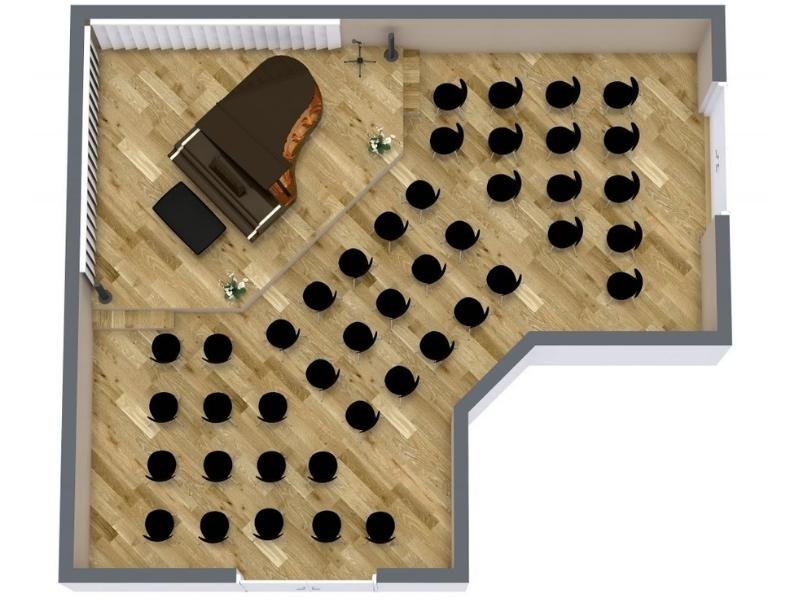
Creating a concert hall floor plan is an excellent step if you are planning a concert.
Concerts range in size, format and audience, and to ensure your event is a success, you will want to make sure to plan ahead.
In this article, we give you lots of tips and ideas to what you should consider when planning the performance.
Get inspiration from all our concert hall floor plans, so you can create a memorable experience for the audience and performers.
Establish Your Goals
Before you start creating your concert hall floor plan, take a moment to define your goals for the event. Jot down a few notes about what kind of concert you want to create and how you want people to experience it.
Ask yourself:
- Is it a formal, seated performance or a more casual event where guests can mingle and dance?
- Do you need bar areas, and where should they be located?
- What kind of atmosphere are you aiming for — elegant, energetic, or relaxed?
Next, think about how people will move through the space:
- Where will guests enter and exit?
- Where are the restrooms located?
- Where’s the best spot for the stage, amplifiers, and microphones?
Finally, consider practical details. Will the size of the event determine how many tickets you sell, or is attendance already fixed? Each of these factors will influence your layout decisions. Understanding your goals early makes it easier to design a floor plan that supports the flow and feel of your concert.
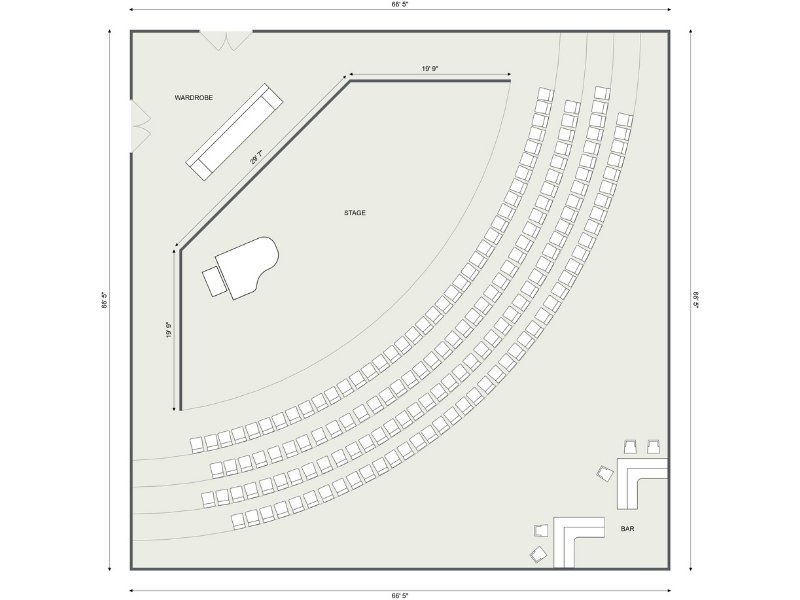
Concert Types
Concerts come in all shapes and sizes, but many fall into a set of general categories. Here are some of the most popular types:
Classical concerts
From opera to chamber music, the type of music can vary tremendously.
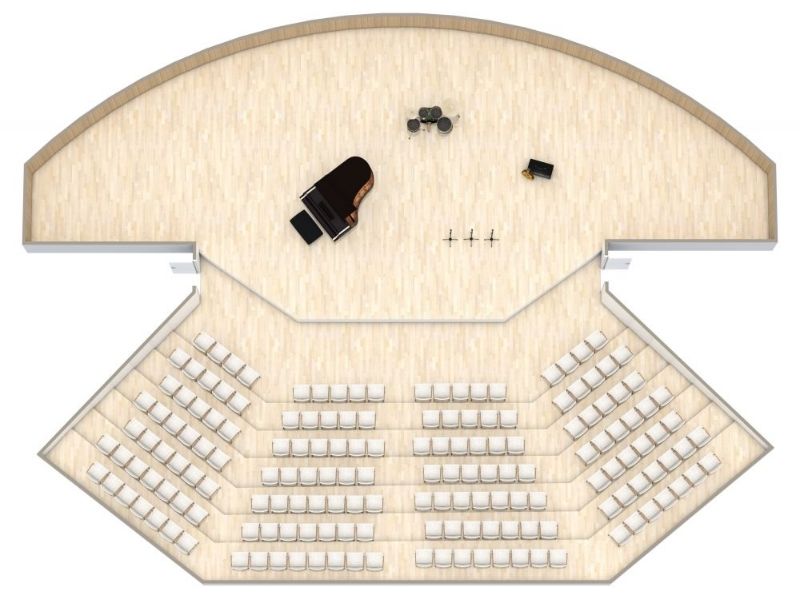
Children's or family concert
These types often have a more "interactive" stage, where the performers can get close to and even involve the audience.
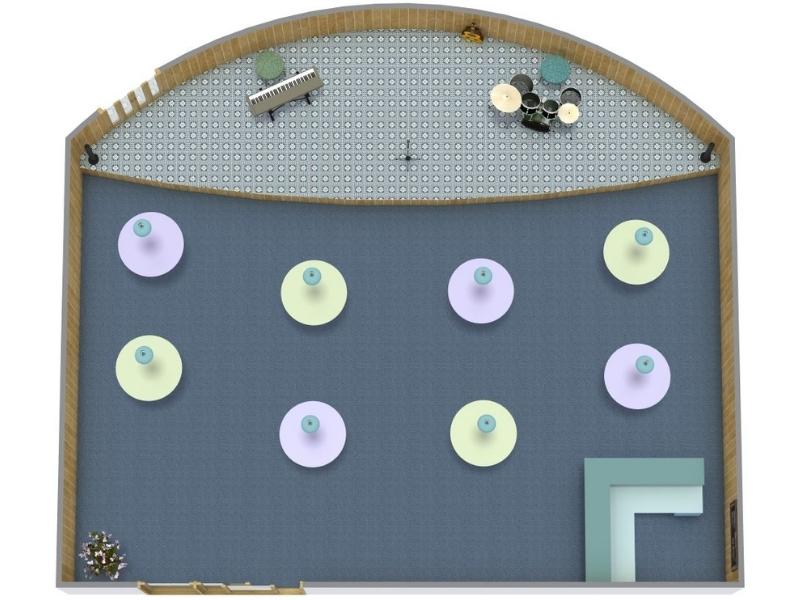
Band
Bands come in all shapes and sizes, from a couple of performers to a large 12-man band.
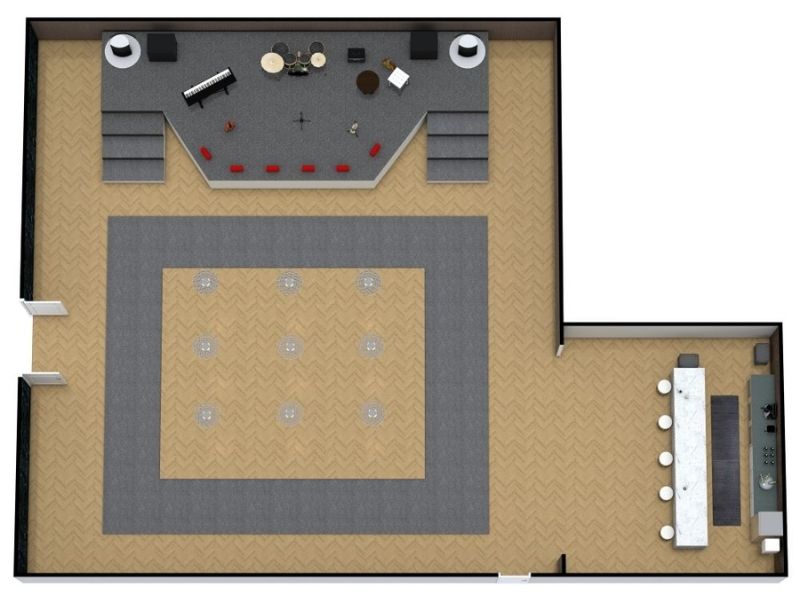
Single musician
Can be everything from a lone singer to a pianist.
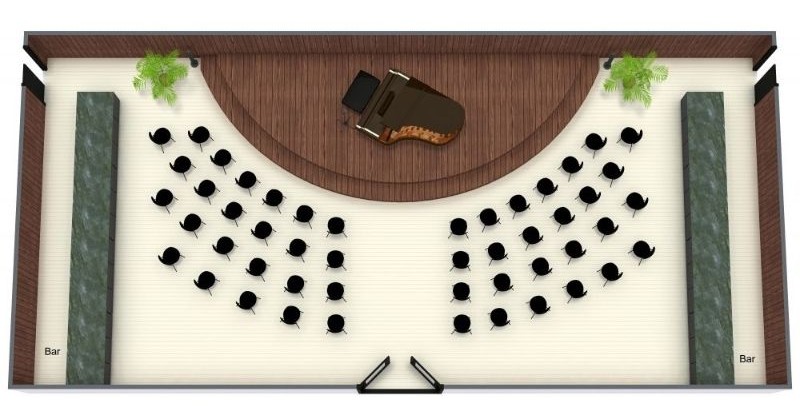
Venue
Consider your venue. All venues have restrictions in terms of how many people can comfortably be seated. Many venues have set seating, with flexible options to add more seating if necessary. This is where a concert hall floor plan really comes in handy. You can draw up the concert hall area, place the stage, then plan how the seating will be. Some examples of venues are:
- Large auditorium: Often the seating is determined e.g. in a theater.
- Pub: The stage is often makeshift, and space is usually tight.
- Club: Large clubs can set up a stage and bar tables to place drinks, and still leave lots of room for dancing.
- Smaller Room: For formal events and ceremonies, a stage will need to be combined for a presenter as well as the performers.
- Private home: Consider whether the concert is a main attraction or background music, this will help determine where you place your staged area.
Plan Your Venue with Precision
Use the RoomSketcher app to create detailed concert hall floor plans.
Add exact measurements, adjust seating density, and explore multiple layout options — all while ensuring the best audience flow and stage visibility.
Related Articles

9 Best Commercial Floor Plan Software Tools
The best way to attract interest, test out different layouts, and communicate design intent is with floor plan software. But which one should you choose? We've made a list of the best options for you.

Commercial Space Floor Plans: Office, Retail, and Restaurant Layouts
Welcome to a world where business success begins with a well-designed floor plan. In the realm of commercial spaces, whether you're an office manager aiming to boost productivity, a retail store owner seeking to entice customers, or a restaurant operator striving to create a memorable dining experience, the layout of your space holds the key.

Plan the Perfect Bar: Layout Examples and Floor Plans
Learn how to plan a bar layout by exploring the key areas every venue needs, from seating and service zones to kitchens, restrooms, and entertainment spaces.
